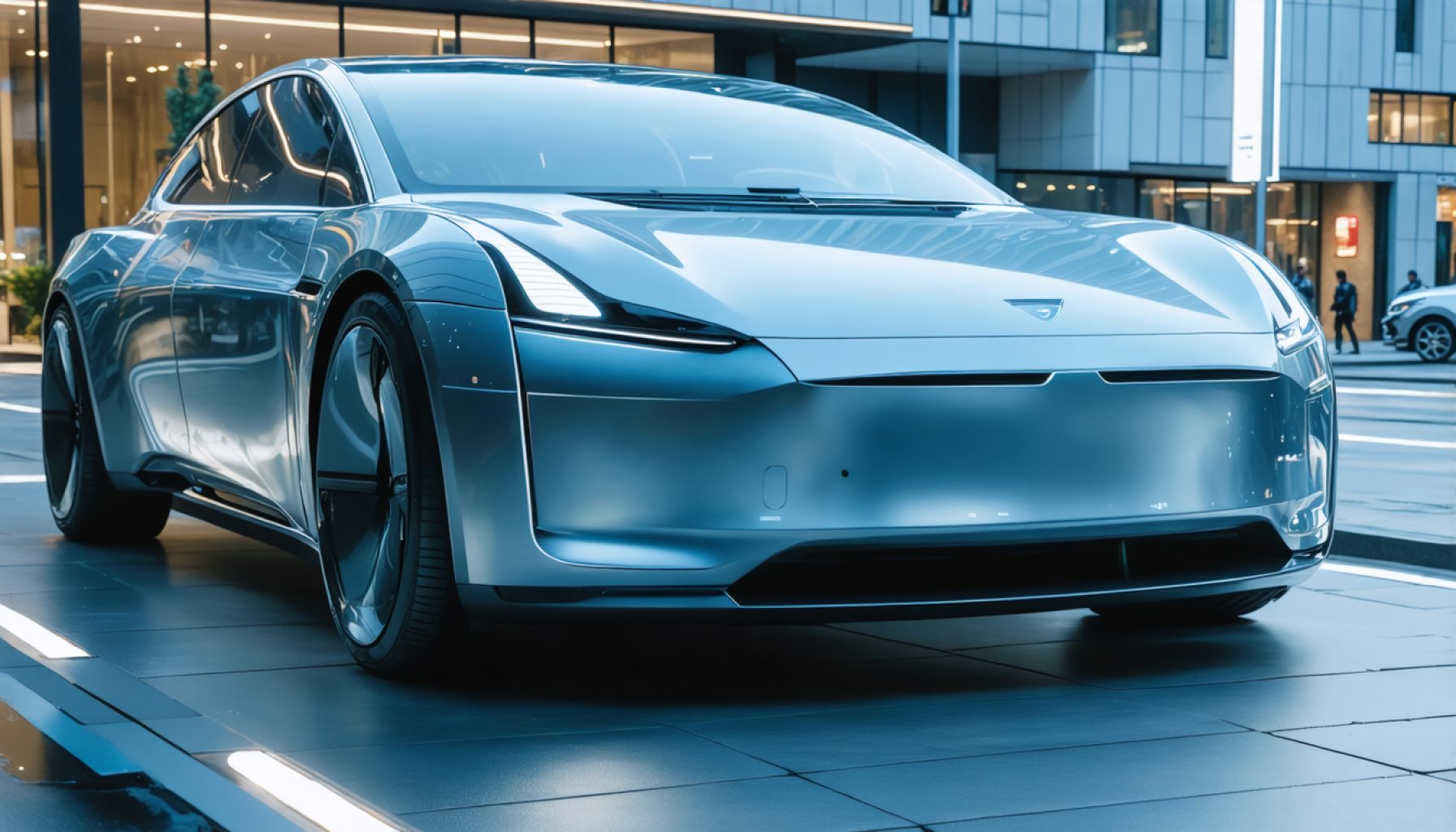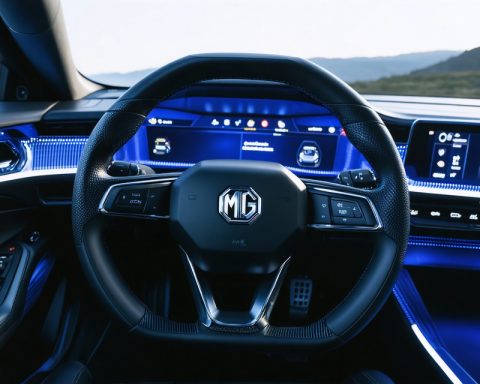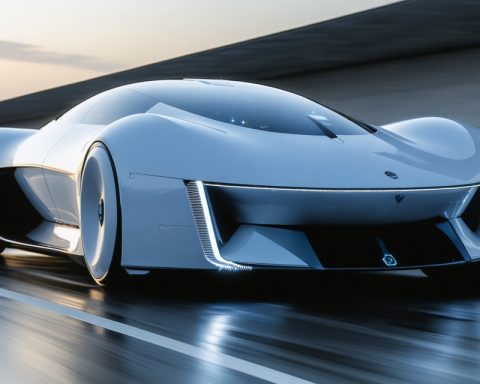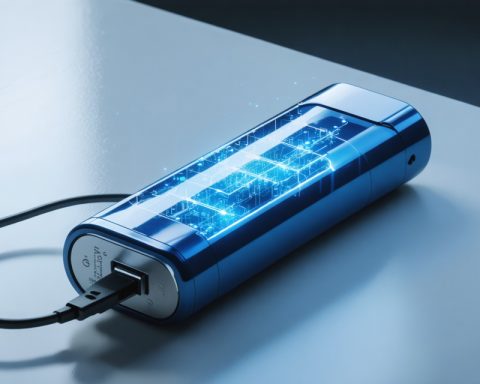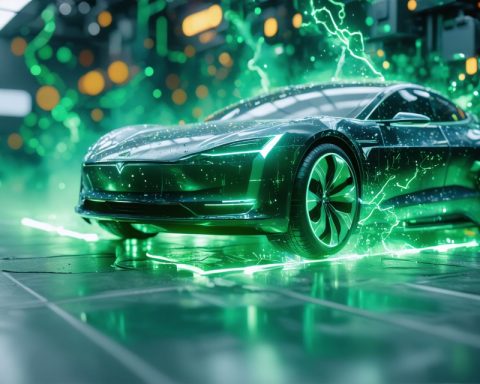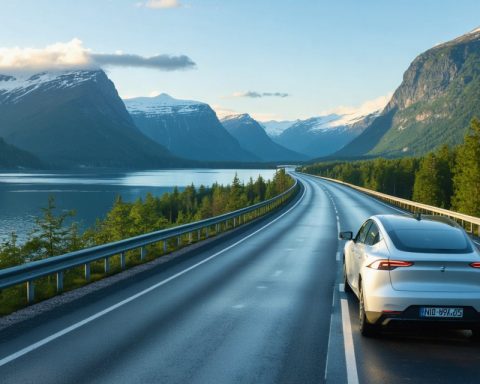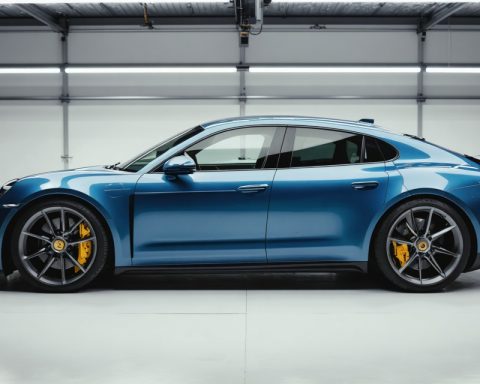- Electric vehicles (EVs) symbolize a major shift in urban transportation, reducing pollution and noise.
- The transition from traditional fuel to electric is driven by climate change concerns and is embraced by city planners and environmentalists.
- Charging stations are rapidly expanding, potentially surpassing gas pumps and emphasizing clean energy use.
- Benefits include cleaner air, reduced vehicle maintenance costs, and quieter, more pedestrian-friendly urban environments.
- Challenges such as increased electricity demand highlight the need for renewable energy integration.
- As EV prices drop and incentives grow, access to clean transportation is becoming more democratic.
- Cities are positioned to blend sustainability with technology, fostering a healthier urban future.
The hum of electric vehicles (EVs) whispers through city streets, signaling a seismic shift in urban transportation. Picture vibrant urban centers filled with sleek, silent cars that glide rather than rumble, offering a breath of fresh air—literally and metaphorically.
Electric vehicles are not merely a trend; they represent an irreversible evolution in mobility. With the specter of climate change looming large, the transition from petrol and diesel to electric is savored by city planners and environmentalists alike. EVs have crafted a new symphony for urban life, one without the deafening chorus of combustion engines.
Moreover, this revolution isn’t happening in isolation. Charging stations sprout like urban flora, transforming parking lots and curbsides into spots where cars rejuvenate and cities recharge. These stations might soon outnumber traditional gas pumps, reflecting an era where energy is clean, efficient, and inexhaustible.
But what does this mean for the everyday urbanite? The answer lies in the purity of the air and the serenity of the streets. As EVs quietly conquer more roadways, the smog that once cloaked cities dissipates. Residents, once accustomed to gray skies, now delight in the deep azure above.
The change also heralds economic benefits. Drivers spend less on maintenance because EVs have fewer moving parts and run on electricity, which typically costs less per mile than gasoline. The silent purr of electrified motors equates to quieter and less congested urban streets, inviting more pedestrian-friendly and lively urban experiences.
Yet, as with any revolution, challenges arise. The power grid’s integrity becomes crucial as demand for electricity increases. Forward-thinking initiatives are essential, leveraging renewable energy sources to sustainably fuel this burgeoning fleet of silencers.
The real beauty of this transformation lies in its inclusivity. Electric vehicles are no longer just for the affluent. Prices steadily decline, and government incentives continue to make them accessible to a wider swath of the population, democratizing access to clean transportation.
In this era of electrification, cities stand poised to embrace a future where sustainability meets technology. The ultimate takeaway is clear: As electric vehicles quietly take their place in urban jungles, we edge closer to a world where the air is cleaner, the streets are quieter, and the possibilities are boundless.
So, whether you drive, walk, or bike through your city, keep your senses open. Listen not just for the rustle of leaves or chirping birds but for the quiet, persistent hum of progress and transformation—powered by electricity.
Electric Vehicles: Paving the Future of Urban Mobility
How-To Steps for Transitioning to EVs
1. Evaluate Your Driving Needs: Determine your daily commute, driving range requirements, and typical usage patterns. Electric vehicles offer different ranges, so choose one that fits your lifestyle.
2. Research EV Models: Compare features, pricing, range, and reviews of various EV models. Consider popular options like the Tesla Model 3, Chevrolet Bolt EV, and Nissan Leaf for a mix of performance and affordability.
3. Consider Charging Infrastructure: Assess available charging options at home, work, and public spaces. Installing a Level 2 home charger can significantly improve convenience.
4. Explore Incentives: Look for government incentives, tax credits, and rebates for EV purchases in your region to lower initial costs.
5. Plan for Maintenance: Understand that EVs require less maintenance than traditional vehicles due to fewer moving parts. Regular software updates are crucial for optimal performance.
Real-World Use Cases
– Car Sharing Programs: Urban areas increasingly adopt EVs for ride-sharing and car-sharing programs, reducing individual car ownership and easing urban congestion.
– Fleet Electrification: Businesses are transitioning fleets to electric, reducing operational costs and carbon footprints.
Market Forecasts & Industry Trends
– Growth Projections: The global electric vehicle market is expected to grow substantially, with a projected CAGR of over 29% from 2022 to 2030 (Source: BloombergNEF).
– Battery Technology Advancements: Continuous improvements in battery technology promise longer ranges and shorter charging times, making EVs more appealing.
Controversies & Limitations
– Environmental Impact of Batteries: While EVs produce zero emissions, the environmental footprint of battery production and disposal remains a concern. Innovations in battery recycling and sustainable materials are ongoing challenges.
– Infrastructure Adequacy: As EV adoption rises, the demand for robust charging networks and grid capacities is critical. This requires significant investments and strategic planning.
Pros & Cons Overview
Pros:
– Reduced emissions and pollution
– Lower operational and maintenance costs
– Quieter, smoother driving experience
Cons:
– Higher upfront costs despite incentives
– Limited driving range compared to conventional vehicles
– Dependency on charging infrastructure
Insights & Predictions
– Integration with Renewables: EV charging networks are increasingly powered by renewable energy sources, aligning with global sustainability goals.
– Autonomous EVs: The convergence of electric and autonomous vehicle technologies will further revolutionize urban transport by improving efficiency and safety.
Quick Tips for Urbanites
– Embrace Multi-Modal Transport: Combine EV use with biking or public transport for a sustainable and efficient commute.
– Stay Updated on Policies: Monitor government regulations and incentives, as these can significantly impact EV affordability and infrastructure development.
– Participate in Community Planning: Engage with local initiatives to advocate for more charging stations and support clean energy policies.
Discover more about sustainable urban living and electric vehicle advancements at Tesla and Nissan.
By understanding the benefits and challenges of electric vehicles, urban residents can prepare for and participate in this transformative shift toward greener, more efficient transportation systems.
